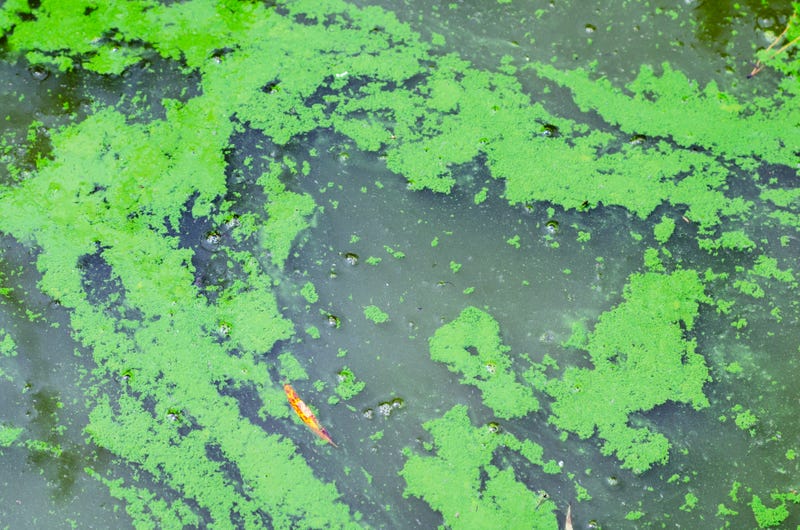
With the temperature in Lake Superior rising throughout the summer, the usually cold pristine body of water has not been known to be a habitat for harmful algae blooms. Still, with water temps rising, the algae is becoming more common.
A new report has found that at least six algae blooms were reported on the western arm of Lake Superior, according to the Wisconsin Department of Natural Resources, the Star Tribune reported.
The potentially hazardous pond scum, Cyanobacteria, also known as blue-green algae, has developed along the shorelines from the Apostle Islands to Thunder Bay in July. The soupy masses took advantage of warm waters and ample sunlight.
A bloom was spotted last week at Barker's Island Beach in Superior, Wisconsin. The algae resulted in the closing of a public swimming area. The algae blooms can be toxic to humans and pets, but only if they come in contact with them; they can also disrupt marine life, the Tribune reported.
Researchers are concerned about the presence of the blooms on Lake Superior and what it could mean long-term for the massive body of water. Kaitlin Reinl, a researcher at the University of Wisconsin-Madison, has been studying the algae blooms and their effect on humans.
"Are things changing in the lake, and are we seeing a shift?" Reinl said to the Tribune. "It could make us sick, but the lake is also a very important cultural and spiritual resource. How might this change access for future generations?"
In 2012, the first algae bloom on Lake Superior was documented, with other blooms popping in the almost decade since.
Warmer surface water temperatures in 2016, 2017, and 2021 caused smaller and dispersed blooms to form. In 2012 and 2018, several major storms hit the lake, increasing the nutrients in the lake, causing larger blooms to thrive.
"One year it's one thing, another year it's something else driving the blooms," Reinl said. "There are a lot of pieces to this puzzle, but this year is following the pattern."
Reinl shared that in an attempt to prevent the blooms, limiting the runoff that comes from shores during destructive shores can help, along with lowering temperatures.
"How are we supposed to affect global, regional air temperatures?" she said. "Doing those things that limit your carbon footprint and contributions to greenhouse gases. We shouldn't overlook that."


![[PHOTOS] Louisiana realtor uses 'creepy dolls' to sell rundown home](https://radioimg.audacy.com/aiu-media/CreepyHomeJonathanHoernerNOLARealEstateLivingPhotography1-f48eb9de-ba3b-4570-a056-c0f196a988b5.jpg?crop=16:9)

